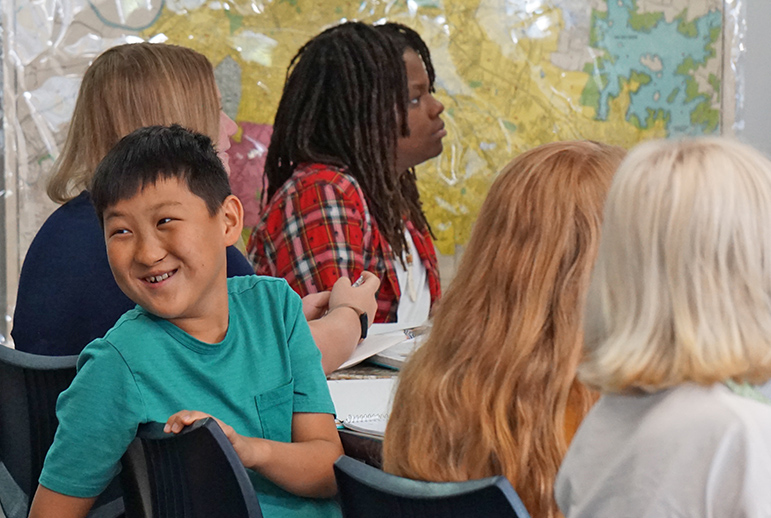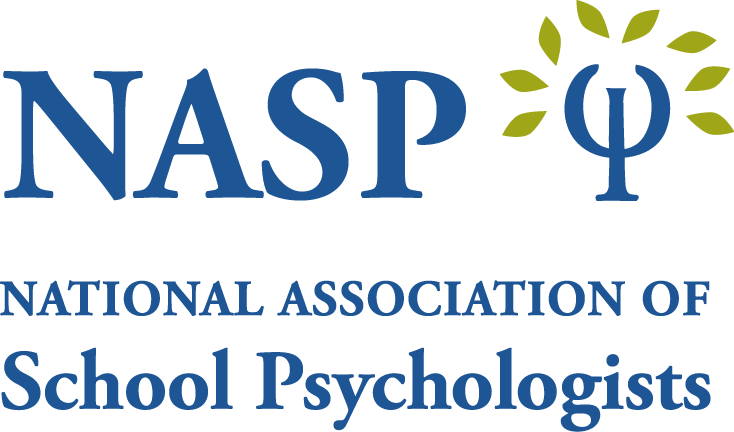What should educators understand about challenging behaviors?
Page 1: Challenging Behavior
 Students today possess a range of academic, behavioral, and social skills. Many students come to school ready to learn and possess the skills they need to support that learning. They make their needs known in constructive ways, manage frustration, and interact smoothly with adults and peers alike. Other students, however, and for a variety of reasons, may lack these skills. These students often exhibit behaviors that interrupt instruction and have a negative impact on the learning environment. These are commonly referred to as challenging or acting-out behaviors. As illustrated in the table below, these behaviors can range from minor to more serious and are often characterized as inappropriate, aggressive, or even destructive.
Students today possess a range of academic, behavioral, and social skills. Many students come to school ready to learn and possess the skills they need to support that learning. They make their needs known in constructive ways, manage frustration, and interact smoothly with adults and peers alike. Other students, however, and for a variety of reasons, may lack these skills. These students often exhibit behaviors that interrupt instruction and have a negative impact on the learning environment. These are commonly referred to as challenging or acting-out behaviors. As illustrated in the table below, these behaviors can range from minor to more serious and are often characterized as inappropriate, aggressive, or even destructive.
| Examples of Acting-Out Behavior | ||
|
|
|
For Your Information
Students who engage in challenging behavior frequently or consistently may experience even more negative outcomes. These students may be excluded from the classroom (e.g., sent to the office, suspended, expelled), which means they miss important instructional and social opportunities. This often leads to students falling further behind their peers.
Left unaddressed, low-level challenging behaviors, such as being off-task, can escalate quickly from arguing to verbally aggressive behavior and even physical aggression towards property and others. Whether minor or more serious, challenging behavior can have negative impacts, including:
- Lost instructional time
- Lowered academic achievement for the disruptive student and classmates
- Lowered sense of belonging at school
- Decreased student engagement and motivation
- Teacher stress and frustration
- Teacher turnover
According to a survey of 1,400 elementary general education and special education teachers, disruptive behaviors accounted for 2.4 hours of lost instruction each week. Over the course of a year, this translates to almost three weeks of lost instructional time.

Research Shows
- Students’ challenging behavior is related to teacher burnout.
(Aloe et al, 2014; McCormick & Barnett, 2011; Kokkinos, 2007) - Students with higher rates of challenging behavior often experience lower academic achievement.
(Blank & Shavit, 2016) - In a National Center for Education Statistics survey, 43% of public school teachers reported that challenging behavior had affected their teaching that school year.
(Musu, Zhang, Wang, Zhang, & Oudekerk, 2019)
In this interview, Pamela Glenn discusses the effects of challenging behaviors and shares her advice for addressing such behaviors. Next, Dr. Gloria Campbell-Whatley explains how culture influences behavior and why it is important for teachers to understand their students’ cultures and backgrounds when addressing behaviors.

Gloria Campbell-Whatley, Ed.D.
Professor, Special Education
University of North Carolina, Charlotte
(time: 2:00)
Transcript: Pamela Glenn
The effects of challenging behavior can make for a very stressful environment. It can throw me off my lesson if I’m not prepared for the behavior that’s coming. I’ve talked to other teachers where it’s made them uneasy about going into the room or approaching a subject and not being able to get through the material that you planned to get through. For the students that are affected by it, some of them shut down, especially if it’s a student that they’ve been with in a classroom over a few years. If they loop with them, they have associated that behavior with school and they don’t like school anymore, so they don’t want to listen. For the student that’s creating the challenging behaviors, it’s a tension. So, there’s something else going on that needs to be addressed. And they’re not learning. Overall, it can make for a very stressful and an unproductive environment.
What I tell new first-year teachers is go and sit in somebody’s class. Find out who is good at classroom management. Find out who knows how to communicate with kids. Go and fill that toolbox, especially in the beginning, because you don’t know what you don’t know. You learn a lot of different strategies, and you have to know your kids. I really think that’s just really the biggest part of it. If you don’t put in the work to know your kids, it doesn’t matter whether you’re a first-year or tenured teacher, challenging behavior is what it is. And students know who’s there for them and who trusts them, I believe. So, the challenges are not as frequent. And when they do pop up, you can defuse them that much quicker. It’s all about the relationships and just learning as much as you can and exposing yourself to as much as you can.”
Transcript: Gloria Campbell-Whatley, EdD
Many behaviors have to do with culture. For example, a teacher who feels like a student is being disrespectful. You’re looking at variations in tone; it may very well sound like aggression because the volume is high. And so, you think that’s aggression, but it’s not aggression. It’s part of the culture to elevate the talking. It can be part of the culture to talk at the same time. And it’s not aggressive and it’s not disrespectful. It’s just what happens in a community, it’s what happens at home. Also, they’re looking directly at the teacher. The eyes may go over to the side, which means “I’m not listening to you,” but it’s not disrespectful. It’s just part of the culture. Speaking passionately also can be misconstrued. Sometimes, the student may interject when the teacher is talking; that can be misconstrued also as [laughs] being disrespectful. So it’s a challenge to learn a new paradigm to get to know the students in this different culture. And you have to learn something about the environment, values, attitudes, and interactions of the culture in order to validate the culture. If you don’t know those things, you won’t be able to validate it, because it’s so different from your culture. You have to look at those non-majority populations and what their norms are. Usually, we look at the norm of the majority population, but if you’re going to be teaching different children, you’re going to have to know a little bit about their norms, especially if you think that behavior is misbehavior. But it’s not misbehavior, it’s behavior that is appropriate for that particular group.
For Your Information
The effects of the COVID-19 pandemic have intensified student behavior and mental health issues. In a survey conducted by the School Pulse Panel, a study sponsored by the National Center for Education Statistics (NCES), 846 K-12 public schools across the U.S. reported that the COVID-19 pandemic had a negative impact on student behavior during the 2021-2022 school year. Data were reported separately for elementary, middle/combined (combinations of grades, including K-12 schools), and high/secondary schools. The table below displays the percentage of elementary schools that reported increased incidents of student acting-out behaviors due to the COVID-19 pandemic.
| Disruptive Behavior | Elementary School |
| Disruptive behavior inside the classroom | 59% |
| Disruptive behavior outside the classroom (e.g., hallways, lunchroom) | 50% |
| Use of electronics (e.g., cell phones, computers) when not permitted | 33% |
| Vandalism | 18% |
| Threats to injure a teacher or staff member | 13% |
(National Center for Education Statistics, 2022)
Additionally, student mental health issues—particularly depression and anxiety—have been on the rise for a number of years. The effects of the COVID-19 pandemic on home and family circumstances (e.g., the death of a loved one, food insecurity, parental unemployment, divorce) have only exacerbated the issue, with many students experiencing grief and trauma. Keep in mind that some acting-out behaviors may be a reflection of these circumstances. For more on student grief and trauma, view the following resources from the National Association of School Psychologists (NASP).

- Talking With Students About Depression
- Anxiety: Helping Handout for School and Home
- Addressing Grief: Brief Facts and Tips
- Addressing Grief: Tips for Teachers and Administrators
- Trauma: Brief Facts and Tips
- Supporting Students Experiencing Childhood Trauma: Tips for Parents and Educators
National Center for Education Statistics. (2022). School Pulse Panel. Retrieved from https://ies.ed.gov/schoolsurvey/spp/
Revisiting the Challenge
Now that you know more about acting-out behavior and its potential impact on instruction and learning, let’s take a closer look at Kai’s and Nora’s behaviors. Think about how their behaviors might impact classroom instruction and learning.
|
|
Nora is well-liked by her peers. She excels academically and enjoys challenging assignments. Because she can usually complete assignments with minimal teacher-led instruction, Nora gets frustrated when peers ask “silly” questions or need extra help on activities she finds easy. During instruction, Nora often:
|
|
|
Kai is very outgoing and easily makes friends. He enjoys and actively participates in hands-on projects and group activities. However, Kai struggles with reading and becomes easily frustrated when required to read aloud or answer comprehension questions. When asked to do an assignment or activity that involves reading, Kai:
|


